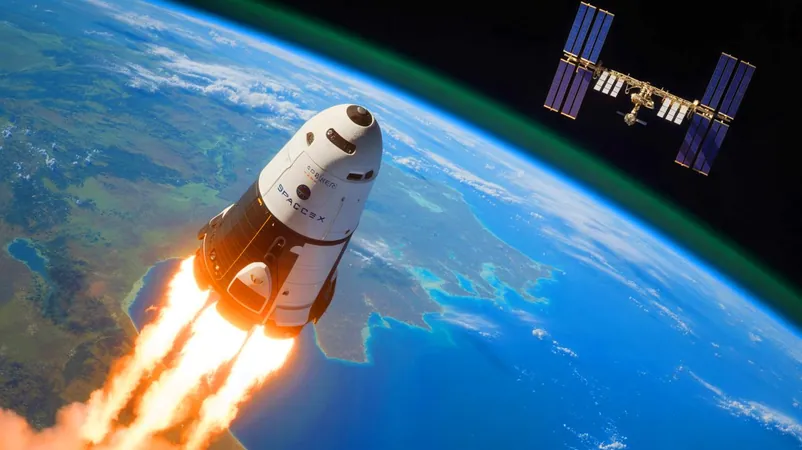
SpaceX Triumphs: Dragon Capsule Returns with 6,700 Pounds of Futuristic Tech from Space
2025-08-02
Author: Wai
A Historic Return to Earth
SpaceX's Dragon capsule has made headlines after successfully landing back on Earth with an impressive haul of 6,700 pounds of cutting-edge equipment from the International Space Station (ISS). This mission is not just a win for SpaceX; it symbolizes a revolutionary partnership between NASA and commercial spaceflight as they push the boundaries of exploratory science and technology.
Testing Materials for Deep Space Expedition
Among the treasures brought back was the Multipurpose International Space Station Experiment (MISSE-20). This ambitious project focused on testing the durability of materials exposed to the harsh conditions of space. The selected materials, including radiation shields and ceramic composites, were strategically placed outside the ISS to gather critical data on their behavior under extreme conditions.
The results from MISSE-20 could redefine future spacecraft design, especially in crafting resilient heat shields and protective structures. Gaining insights on material degradation is vital for ensuring spacecraft longevity and safety during deep space missions.
Innovative Robotics Ready for Space Challenges
Another exciting highlight of the mission was the return of NASA’s groundbreaking Astrobee-REACCH robotic system. This advanced technology integrates free-flying robots with tentacle-like arms, enabling them to grasp and manipulate objects with precision in microgravity.
The potential applications for these robots are vast. From servicing satellites to managing orbital debris, Astrobee-REACCH could significantly enhance the longevity and safety of our space assets. As technology evolves, robots like these will prove essential for maintaining a secure and efficient environment in low Earth orbit.
Revolutionary Imaging Technology in Space
The Dragon capsule also delivered groundbreaking hardware and data from the OPTICA experiment. This initiative, which focused on optimizing the transmission of hyperspectral imagery, achieved remarkable results during its year in orbit.
The implications are crucial, offering advancements in disaster response, agriculture, and environmental management. By refining how we capture and relay imagery from space, OPTICA could dramatically impact our ability to monitor and react to global issues, transforming data utilization on Earth.
Inspiring the Next Generation with Space Stories
Additionally, the Dragon capsule returned with a special collection of children's books from the Story Time from Space project. During their time aboard the ISS, astronauts read STEM-themed books and shared science demos, creating educational videos for kids on Earth.
This initiative aims to spark the interest of young explorers and innovators in the realms of space and science, fostering a new generation eager to uncover the secrets of the universe.
Looking Ahead: What’s Next for Space Exploration?
The successful mission of the Dragon capsule highlights the ISS's role as a vital proving ground for innovations that can enhance life on Earth and push humanity towards further cosmic adventures. What groundbreaking technologies will next missions bring, and how will they shape our future in exploring the final frontier?


 Brasil (PT)
Brasil (PT)
 Canada (EN)
Canada (EN)
 Chile (ES)
Chile (ES)
 Česko (CS)
Česko (CS)
 대한민국 (KO)
대한민국 (KO)
 España (ES)
España (ES)
 France (FR)
France (FR)
 Hong Kong (EN)
Hong Kong (EN)
 Italia (IT)
Italia (IT)
 日本 (JA)
日本 (JA)
 Magyarország (HU)
Magyarország (HU)
 Norge (NO)
Norge (NO)
 Polska (PL)
Polska (PL)
 Schweiz (DE)
Schweiz (DE)
 Singapore (EN)
Singapore (EN)
 Sverige (SV)
Sverige (SV)
 Suomi (FI)
Suomi (FI)
 Türkiye (TR)
Türkiye (TR)
 الإمارات العربية المتحدة (AR)
الإمارات العربية المتحدة (AR)